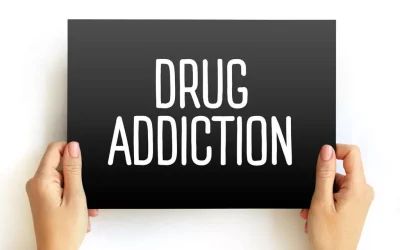Customized care is tailored by experts to mitigate relapse and to ensure complete healing. Holistic drug rehab centers focus on every aspect of the person’s being; physical, emotional, spiritual, and environmental. Adolescent Community Reinforcement Approach (A-CRA) is an empirically-supported behavioral treatment based on principles of operant conditioning. In A-CRA, clinicians deliver tailored modules to the adolescent based on presenting concerns with the goal of helping adolescents develop a rewarding, non-substance use lifestyle [42]. It is feasible for adolescents with alcohol, cannabis, and/or opioid use disorders [43].
Transformation or trouble? Research into MDMA plagued with allegations of misconduct
Adolescents are exploring their identities (including how they personally relate to drugs), learning how to weigh the consequences of their actions, and preparing for adulthood, which involves making choices about their future. The Seven Challenges Program, for example, uses supportive journaling exercises, combined with counseling, to help young people practice informed decision-making around substance use with those processes in mind. Substance use during adolescence is particularly dangerous because psychoactive substances, including nicotine, cannabis, and alcohol, can interfere with healthy brain development (Winters, K. C., & Arria, A., Prevention Research, Vol. 18, No. 2, 2011). Young people who use substances early and frequently also face a higher risk of developing a substance use disorder in adulthood (McCabe, S. E., et al., JAMA Network Open, Vol. 5, No. 4, 2022). Kids who avoid regular substance use are more likely to succeed in school and to avoid problems with the juvenile justice system (Public policy statement on prevention, American Society of Addiction Medicine, 2023). There’s overwhelming evidence that teens who abuse drugs or alcohol are far more vulnerable to SUDs than adults.
Delta-8 & Teens: Why Teens Are Using It – Newport Academy
Delta-8 & Teens: Why Teens Are Using It.
Posted: Tue, 02 Apr 2024 07:00:00 GMT [source]
Medical Professionals
Located in the heart of Beverly Hills, Evolve teens rehab offers the best help for teenagers with substance abuse. The experts address mental, emotional, physical, and spiritual problems as well as cravings with strategic and well-tailored programs. The teen rehab treats PTSD, anxiety, OCD, depression, ADHD, and other mental illnesses along with addiction to drugs and alcohol.

Inpatient Treatment For Teens
- Willa Hall, a clinical psychologist in the Phase 3 trials, says she and her colleagues were shocked by how ICER described their work.
- National Alliance on Mental Illness – Find resources for people living with mental illness.
- Explore our rehab directory for a simple way to find rehabs that offer teen programs.
- This is complicated by the fact that teens who abuse substances typically hide this behavior from parents as they are very unlikely to approve.
- Vaping is attractive to teens because e-cigarettes are often flavored like fruit, candy, or mint.
- Importantly, it also reduces alcohol craving, likely through its effects on dopamine that is released in response to cues, such as the sight, smell and taste of alcohol.
Therefore, the treatment process may include family therapy, family education on substance use and behavioral health conditions, and recommendations for family members to seek additional help when appropriate. Teen substance use and behavioral health concerns are serious and pervasive issues that have grown in severity over the last decade. As with many behavioral health conditions, substance use disorders (SUDs) can develop for a variety of reasons that often result in a feeling of helplessness for the parent or caregiver. It’s also important to understand that drug abuse and drug addiction are not the same thing. Drug abuse is defined as any use of an illegal drug, any use of a prescription drug beyond what is recommended by a doctor, or excessive use of legal intoxicants like alcohol (though for teens, this is also illegal use).
- Given the impact that early and effective treatment interventions for adolescent SUDs can have, the need for understanding potential treatment options and research advances in the field is imperative.
- The teen drug rehab has every requirement for a comfortable and enjoyable stay with a visually appealing landscape, gardens, equestrian estate, and beach.
- “We’re all invested in knowing how it works and what are the risks for people.”
- Rather than relying on prefrontal-based extinction learning, we have tested an alternative method called memory reconsolidation updating.
- Adolescent Community Reinforcement Approach (A-CRA) is an empirically-supported behavioral treatment based on principles of operant conditioning.

For some harm reductionists, actively encouraging teens against using drugs could violate the principle of respecting autonomy, Weiner said. In 2008, there were an estimated 2.1 million juvenile arrests in the US, 10% of which involved drug abuse or drunk driving. One study showed that nearly half of juvenile detainees have an SUD, and 77% of teens who are arrested reported substance teen drug abuse use in the last 6 months. Any medication recommended to your child should be researched at length before they start taking it. These drugs are extremely potent in their own right, have potential side effects, and many are considered “habit-forming” — capable of causing addiction. The right medication may help your teen work through a difficult phase of their recovery.
Rehab for Young Adults and Teens
- Memory reconsolidation is based on the principle that memories are dynamic, not static.
- Digital interventions are not only perceived as more private and less stigmatized than traditional clinical evaluations, but have also been found to facilitate participant motivation, self-efficacy, relapse prevention, and social support [72–75].
- It can be challenging to distinguish characteristic teenage behaviors from concerning behaviors, as mood swings, irritability, and isolation are more common during this life stage.
- If those friends are older, teens can find themselves in situations that are riskier than they’re used to.
- We publish material that is researched, cited, edited and reviewed by licensed medical professionals.
- NCDHHS is continuing its partnership with Addiction Professionals of North Carolina (APNC) to provide training and technical assistance support for all awarded subrecipients.
Early drug abuse corelates with substance abuse problems later in life, and the most significant increases in destructive behavior appear to take place among older teens and young adults. The convenience of the outpatient teenage drug rehab centers is that they operate in the daytime on schedules. It allows the patient to return to their residential area after daily sessions. The adolescence stage is often unpredictable and comes with a lot of personality disorders. The most recurring issue is peer pressure, which leads youths to indulge in unsafe drug use.

The hope for these emerging therapeutic approaches is that we can tailor current anxiety treatments for young people by targeting the developing brain. It is important to be mindful of the fact that the magnitude and intensity of the fear response in people diagnosed with anxiety are probably much greater than the fear evoked by aversive stimuli in lab experiments, which are often mild, narrowly targeted and transient. It is also important to remember that CBT and antidepressants can treat anxiety effectively in many people.
Preventing Relapse After Completing Teen Rehab
- Recreational therapy (also called Therapeutic Recreation or TR) engages teen rehab patients in active leisure activities (e.g. sports, arts and crafts, games).
- When self-rehab is attempted at home, it is likely to lead to continuous relapse, which may worsen the situation.
- A lower ability to initiate fear-extinction learning is thought to confer a risk for anxiety.
Teenagers in Mississippi are 21.23% less likely to have used drugs in the last month than the average American teen. Teenagers in Minnesota are 2.14% less likely to have used drugs in the last month than the average American teen. Teenagers in Michigan are 6.95% more likely to have used drugs in the last month than the average American teen. Teenagers in Massachusetts are 33.37% more likely to have used drugs in the last month than the average American teen. Teenagers in Maryland are 1.71% less likely to have used drugs in the last month than the average American teen.
“None of us are against this as a useful tool, or none of us are against treating mental health. We don’t have any monetary interests in this not going through,” she says. The allegations surfaced in a draft report released in March by the Institute for Clinical and Economic Review, a nonprofit that evaluates clinical trials and drug prices, which found “substantial concerns about the validity of the results” of the MDMA clinical trials. Many believe white Americans suffer higher rates of premature death from addiction, overdoses and mental health.
